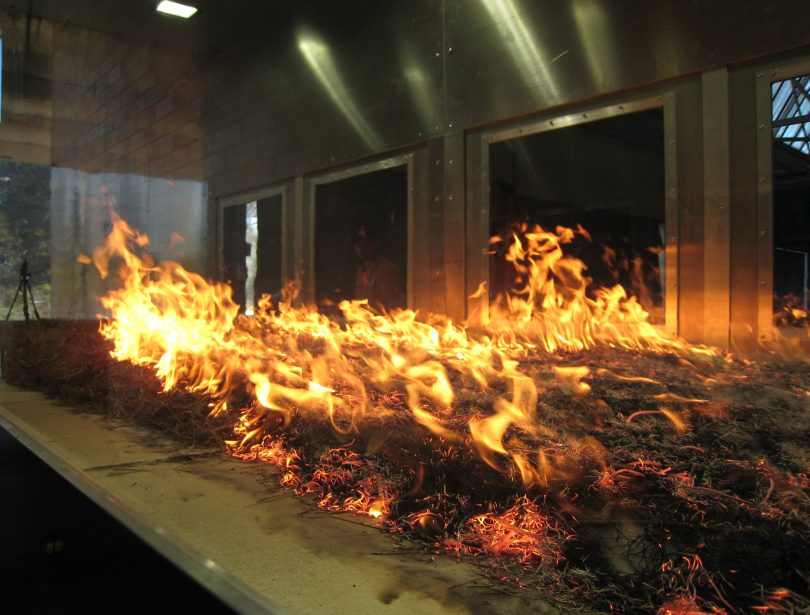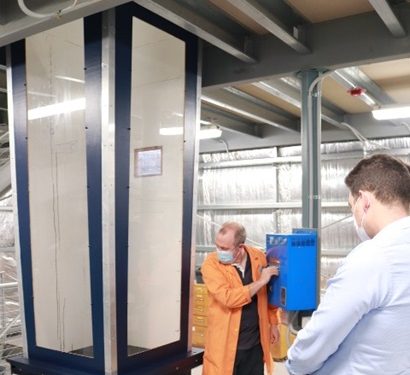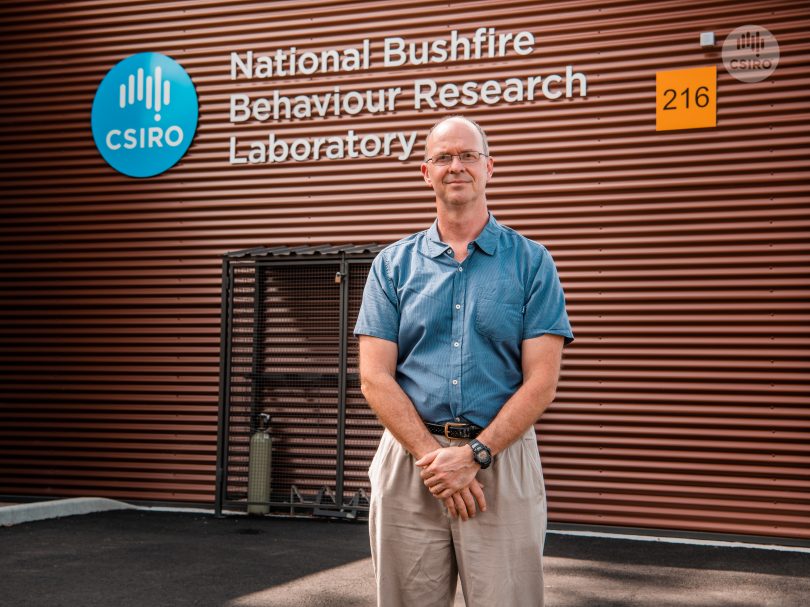
CSIRO’s Pyrotron in action at the new National Bushfire Behaviour Research Laboratory at Black Mountain. Photos: CSIRO.
Work at a new world-class bushfire research facility in Canberra will help protect communities and better equip emergency services to deal with an increasingly dangerous environment.
CSIRO’s new $2.1 million National Bushfire Behaviour Research Laboratory at Black Mountain Canberra will provide the knowledge to better understand how bushfires behave, what conditions make them worse and the best ways to respond.
It will house two unique instruments designed to allow the detailed investigation of the physics of bushfires – CSIRO’s Pyrotron and Vertical Wind Tunnel.
The Pyrotron is a 29 m long combustion wind tunnel designed to investigate how flames work in bushfire fuels such as grass, forest litter and shrubs, under a broad range of burning conditions, including those of an extreme fire danger day.
Factors such as wind speed, fuel type and structure, fuel load and fuel moisture content can be precisely varied or strictly controlled.

Researchers with CSIRO bushfire lab Vertical Wind Tunnel. Photo: CSIRO.
The Vertical Wind Tunnel is designed to study the combustion and aerodynamic characteristics of embers formed by burning bark and other materials that are blown ahead of a bushfire and often start spot fires.
These are the main cause of bushfires breaching containment lines and can threaten the lives of firefighters and members of the public and cause home damage or loss.
CSIRO CEO Larry Marshall said that as bushfires become more frequent and severe due to climate change, the national science agency was investing in cutting-edge research to protect Australians and build on its more than 70 years of collaborative research in the field.
“Bushfires are one of Australia’s greatest challenges and it will take the best science, facilities and partnerships across industry, government and research to help to protect our communities, front-line responders and environment,” Dr Marshall said.
“During the Black Summer fires of 2019 and 2020, CSIRO’s scientists worked side by side with teams on the ground – as they have been for nearly every major fire event since the 1950s – to better prepare for and manage bushfire seasons that are getting hotter, drier and longer.”

CSIRO bushfire behaviour expert Dr Andrew Sullivan: “There are so many factors at play.” Photo: CSIRO.
Dr Marshall said the new lab would be made available to other organisations and researchers.
“Challenges this complex cannot be solved by one organisation alone and we look forward to bringing many partners together at this new national lab – as we do at all our national lab facilities across the country – to continue building the resilience and strength of our communities and economy,” he said.
CSIRO bushfire behaviour expert Dr Andrew Sullivan said the Pyrotron and Vertical Wind Tunnel were purpose-built scientific apparatus that could replicate aspects of real-life bushfires under a controlled range of conditions without the risks, safety concerns and access issues that a live bushfire presented to firefighters.
“Bushfires are a natural part of life in Australia, but as we know, they can be devastating and staying on the front foot can be difficult because there are so many factors at play,” Dr Sullivan said.
“The new laboratory will help us better understand fundamental bushfire behaviour dynamics and the factors and interactions that influence the behaviour of bushfires, to support their management by firefighters.
“The apparatus in the new laboratory can also help researchers and fire management agencies to better understand and manage fires under future climate conditions.”
ACT Rural Fire Service chief officer Rohan Scott said the new laboratory would provide essential information about fire behaviour to support decision making during bushfires.
“Knowing with confidence the factors that influence fires and understanding when those factors become dangerous is critical to the safe and effective deployment of our fire crews and the safety of our communities,” Mr Scott said.












